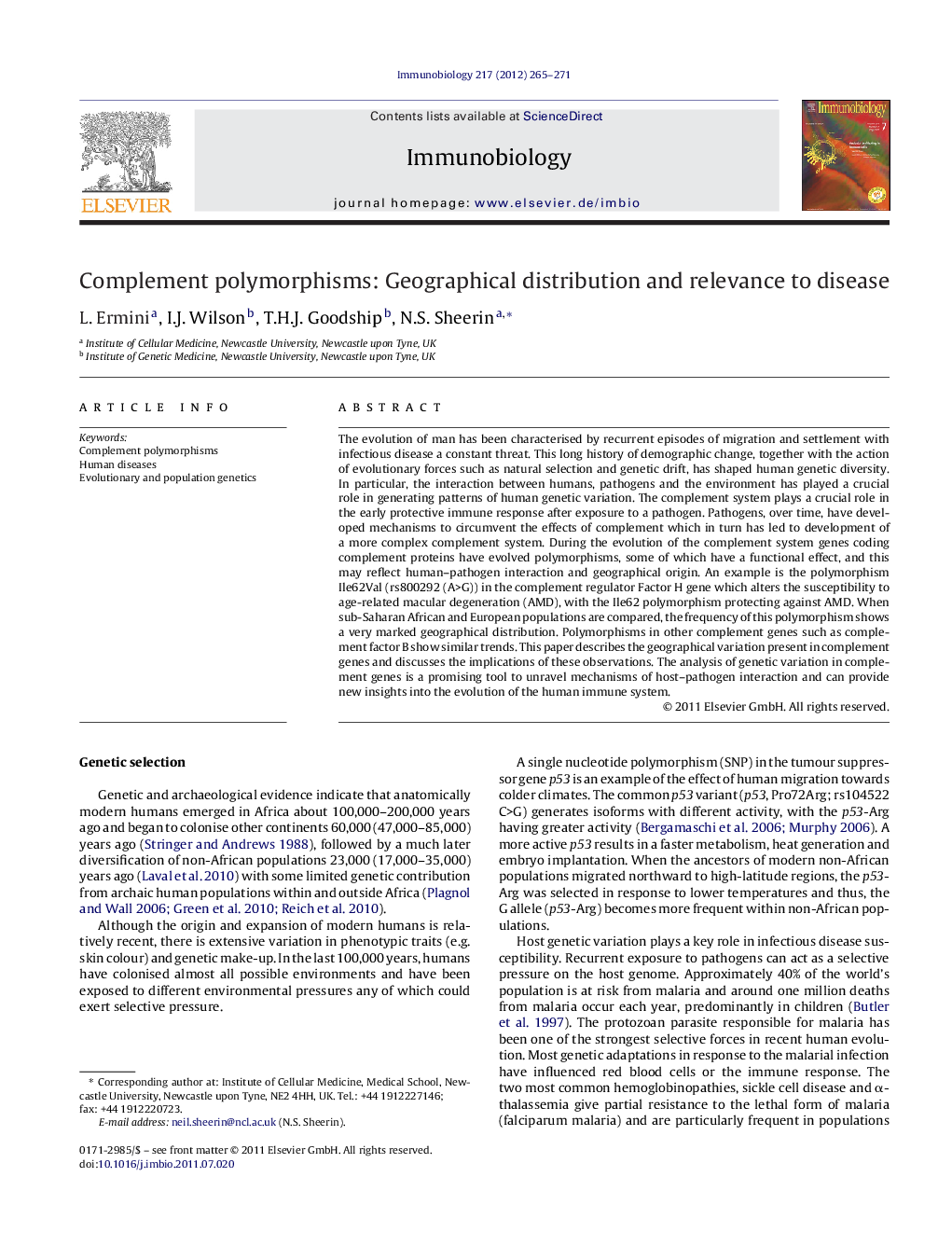| Article ID | Journal | Published Year | Pages | File Type |
|---|---|---|---|---|
| 10941102 | Immunobiology | 2012 | 7 Pages |
Abstract
The evolution of man has been characterised by recurrent episodes of migration and settlement with infectious disease a constant threat. This long history of demographic change, together with the action of evolutionary forces such as natural selection and genetic drift, has shaped human genetic diversity. In particular, the interaction between humans, pathogens and the environment has played a crucial role in generating patterns of human genetic variation. The complement system plays a crucial role in the early protective immune response after exposure to a pathogen. Pathogens, over time, have developed mechanisms to circumvent the effects of complement which in turn has led to development of a more complex complement system. During the evolution of the complement system genes coding complement proteins have evolved polymorphisms, some of which have a functional effect, and this may reflect human-pathogen interaction and geographical origin. An example is the polymorphism Ile62Val (rs800292 (A>G)) in the complement regulator Factor H gene which alters the susceptibility to age-related macular degeneration (AMD), with the Ile62 polymorphism protecting against AMD. When sub-Saharan African and European populations are compared, the frequency of this polymorphism shows a very marked geographical distribution. Polymorphisms in other complement genes such as complement factor B show similar trends. This paper describes the geographical variation present in complement genes and discusses the implications of these observations. The analysis of genetic variation in complement genes is a promising tool to unravel mechanisms of host-pathogen interaction and can provide new insights into the evolution of the human immune system.
Keywords
Related Topics
Life Sciences
Biochemistry, Genetics and Molecular Biology
Cell Biology
Authors
L. Ermini, I.J. Wilson, T.H.J. Goodship, N.S. Sheerin,
